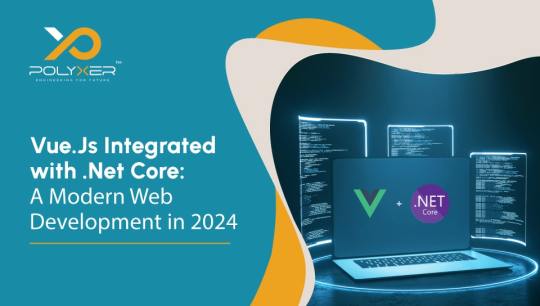Polyxer Systems is a leading outsourcing and custom software development company delivering excellence in web, software, and product development services.
Don't wanna be here? Send us removal request.
Text
Lean Software Development: A Complete Guide

Introduction
If you select the correct software development methodology, you are more likely to develop products or services quickly that improve efficiency and customer satisfaction.
One of the most widely-used software development methodologies for this is known as Lean development methodology.
Lean software development is an innovative approach that eliminates wasted time and optimises the development process for faster product delivery.
Since its inception, this innovative methodology has grown in popularity for its ability to streamline operations, enhance customer satisfaction and deliver high-quality software as quickly as possible.
This post will introduce you to the Lean software development methodology. You will learn what it is, its seven principles and practices, the benefits and drawbacks of lean development, and finally, how you can implement the Lean methodology for your software development project.
Without wasting any time, let's jump right in.
What Is Lean Software Development?
Lean software development is an approach that aims to reduce development time, effort, and cost to create a user-centric sustainable software product. It was introduced by Mary and Tom Poppendieck in their book published in 2003.
The Lean principles were first coined by Toyota, the Japanese automotive manufacturing giant, in the 1940s to describe its manufacturing process. These principles aim to build feature and functionality-rich products in less time, money, and resources.
In simpler terms, Lean software development decreases cost, effort, and waste by speeding up the development process and allowing the product to release in the market quickly.
To Read Full Blog : Lean Software Development
0 notes
Text
Feature-Driven Development: A Success Software Development Delivery

Introduction
Feature-driven development is one of the robust software development methodologies that assist developers in building a feature-rich product like Microsoft, Adobe, and more.
This approach focuses on feature-centric development for continuous delivery of features and iterations according to customer needs and preferences to add more value to the business and meet customer expectations.
If you want to develop a customer-centric product while improving your product management process, Feature-driven development may be just the ticket.
In this post, we will walk you through what Feature-driven development is, why is it important, its pros and cons, and the most important question: what's the difference between FDD vs Scrum?
Let’s First Start With What Feature Driven Development Is
Feature Driven Development is an agile framework that organises and breaks down the software development process into manageable feature sets to allow development teams to focus on components that align with business and customer requirements.
This structured and flexible approach emphasises the importance of delivering products with essential features on time and within budget to ensure quality and client satisfaction.
Moreover, it helps teams deliver products faster through adaptability, effective communication, and understanding of project goals.
In a nutshell, FDD is an iterative approach that facilitates the frequent release of features in each iteration and fosters quality where every team member collaborates to contribute their unique expertise for building quality products.
To Read Full Blog : Software Development
0 notes
Text
#polyxersystems#clouddevelopmentservices#clouddevelopment#cloudapplicationdevelopmentservices#cloudsoftwaredevelopment#software#cloudsolutionscompany#customsoftwaredevelopment#softwaredevelopment#webdevelopment
0 notes
Text
How to Decide Technology Stack for Your Next Software Development Project?

Introduction
Adopting the wrong technology stack or continuing to use the same is a huge mistake that can cost you a lot of money in the long run. For instance, if your software application doesn’t have the right tools, then there can be a high risk of a performance gap.
A technology stack is basically a set of tools and technologies used to design and develop mobile applications, web applications, or software applications. The significance of using the right technology stack for your project can’t be underestimated.
But as soon as you start your research, you discover there are so many choices available. How will you know which is the right technology stack for a software development project?
Like every tricky question, the answer to this question is – it depends.
It depends on project type, size, requirements, and more such factors. In this blog post, we’ll give you an overview of technology stacks, how to select the right one for your project and things to consider to help you make an informed decision about your future tech stack.
What is a Technology Stack?
A technology stack is the collection of tools, apps, platforms, frameworks, programming languages, libraries, and third-party integrations that a developer uses to create a software product.
In simple terms, it's an aggregation of tools and technologies for creating websites and applications that can carry out seamless business operations and enhance performance metrics.
Applications have two software components: Front-end and Back-end. Both these layers of applications are developed using a technology stack.
Front-End:
Effective tools and technologies are used to enhance user interactions and provide an accessible and enjoyable user experience.
Back-End:
Functional tech stacks are used to ensure all features are promptly responding to user requests.
To Read Full Blog : How to Decide Technology Stack?
#clouddevelopmentservices#polyxersystems#clouddevelopment#cloudapplicationdevelopmentservices#cloudsoftwaredevelopment#softwaredevelopment#software#customsoftwaredevelopment#cloudsolutionscompany#webdevelopment
0 notes
Text
Develop A Learning Management System (LMS) For Your Business: A Quick Guide

“They want to learn but don’t want to travel to overcrowded classrooms and manage heavy hard copies of study materials?”
“You want to conduct regular training sessions for your employees but with an urge to save time and cost while side-operating with the regular tasks of an organization?”
We know the word for your solution - a Learning Management System(LMS)!
Need to familiarize yourself with it?
You’ll be! Just by the end of this blog.
For a quick sneak peek into the topic… LMS is a software used to manage and deliver educational courses, training programs, and learning and development programs. The organizations willing to track employee learning progress, identify skill gaps, and assign and manage training tasks - LMS sprinkles it all.
Here, we’ll be educating you on the basic aspects of developing a learning system including its types, features, benefits, and development process to make you well aware of the technological advancement you can incorporate into your educational and organizational requirements.
Learn About the Learning Management System(LMS)
As simple as it seems, a learning management system is software developed to automate learning or training processes for students, employees, or other users. It enables the creation, management, and delivery of educational program content online.
LMS allows one to embody all learning materials/courses in a single platform - making it accessible to everyone. Another thing that adds up the positivity in LMS is, that you can filter your learners based on their job roles or profiles and assign respective study material to them while also tracking your program.
The following reports spoke the best about LMS:
Eliminating traditional training and using LMS can save up to 60% of the time of organizations.
As of 2022, there are around 73.8 million active LMS users.
7 out of every 10 companies prefer their training sessions to be conducted online using LMS.
And what’s best? You can enhance your employee performance by 15% to 25% using LMS, as the sessions will be conducted at their own pace.
The COVID-19 pandemic has given this system a strong rise, pushing decision-makers to bring the eLearning platforms, and since then LMS has taken a popular spot for learning. The LMS market is estimated to generate about $44.49 billion by the end of 2028.
To Read Full Blog : Learning Management System (LMS)
#polyxersystems#clouddevelopmentservices#clouddevelopment#cloudapplicationdevelopmentservices#cloudsoftwaredevelopment#customsoftwaredevelopment#cloudsolutionscompany#softwaredevelopment#webdevelopment
0 notes
Text
The Future of Software: Exploring AI, Machine Learning, and Beyond

Introduction
The software development world is already changing with continuous technological advancement. And now, with the evolution of Artificial Intelligence and Machine Learning, it’s changing even faster.
With every passing moment, Artificial Intelligence is redefining software development by enhancing productivity, streamlining workflows, and providing accurate predictions.
AI-driven software development has made the development process easier and more efficient, from automating repetitive tasks to analysing vast amounts of data.
But what’s the future of software development with AI? It’s exciting to predict what the future holds for AI.
In this blog, we will discuss the future of AI and what value and challenges it brings to software development.
Let’s dive in.
What Is Artificial Intelligence?
Artificial intelligence in software development refers to computer systems and algorithms development for performing tasks that require human intelligence. AI systems use various techniques, such as machine learning, deep learning, and natural language processing, to process and analyse data, identify patterns, and make informed decisions.
AI is transforming the software development process with its ability to learn and work like humans, allowing them to automate and perform complex tasks with minimal or no human interruption.
To Read Full Blog : The Future of Software
0 notes
Text
Vue.Js Integrated with .Net Core: A Modern Web Development in 2024

Vue.js can be seamlessly integrated with .NET Core for modern web development. Leveraging Vue.js for the front end allows for a dynamic and interactive user interface, while .NET Core handles backend functionalities. This collaboration provides a scalable, modular, and efficient solution for building web applications with a rich user experience.
Vue.Js Introduction
Vue.js is a progressive JavaScript framework for building user interfaces, offering a flexible and incrementally adaptable structure. With its reactive data-binding and component-based architecture, Vue.js simplifies UI development, making it easy to integrate into projects of varying scales.
Features:
Progressive JavaScript Framework
Declarative Rendering
Component-Based Architecture
Reactivity
Versatile Integration
Vue CLI and DevTools
.Net Core Introduction
.NET Core is a cross-platform, open-source framework for building modern and scalable applications. It supports multiple programming languages and is designed for cloud, mobile, and desktop development.
Features:
Cross-Platform Development
Open-Source
Modular Architecture
Support for Multiple Languages
Cloud-Ready
Unified Platform
To Know More : Vue.Js Integrated with .Net Core
#polyxersystems#clouddevelopmentservices#clouddevelopment#cloudapplicationdevelopmentservices#cloudsoftwaredevelopment#cloudsolutionscompany#customsoftwaredevelopment#software#softwaredevelopment#webdevelopment
0 notes
Text
Real-Time Applications with SignalR and Vue.js

Real-time applications have become essential for organisations and developers in today's frantic digital world.
Whether it's for social media, online gaming, or corporate communication, users want real-time information, interactive features, and teamwork. But to create such applications, you need the necessary technology and tools.
In this blog, we will look at the powerful SignalR and Vue.js combination to build real-time apps.
Why Are Real-Time Applications Required?
Let's first examine the importance of real-time applications, In the present era before delving into the technical details.
1. Instantaneous communication
Users can instantaneously communicate with each other via real-time applications. For messaging apps, customer support, and collaborative workspaces in particular, this is crucial.
2. Live Updates
Live updates are provided by real-time apps, enabling users to view changes as they take place. This is useful for news websites, social media, and stock trading systems.
3. Interactive Features
To keep users interested, live polls, online gaming, and auctions all rely on in-the-moment interactions.
4. Productivity and Efficiency
Real-time apps in the workplace increase productivity by facilitating real-time document editing, video conferencing, and distant collaboration.
5. Competitive Advantage
Businesses that offer real-time functionality have an advantage over their rivals since customers frequently favour programs that offer quick responses.
To Read Full Blog : Real-Time Applications
0 notes
Text
SignalR Vs. Socket.IO – The Differences You Need To Know

Introduction
When it comes to find the right framework for your company’s web application development, it can be quite difficult to know which one to choose. In this case, the first and the most popular names that come to your mind are the SignalR and the Socket IO.
While SignalR is more similar to SocketIO in terms of facilitating transport negotiation, there are key distinctions that make these two competitors.
This blog will cover all you need to know about SignalR and Socket.IO. Continue reading to learn more about their key differences.
SignalR
Though there are similarities that SignalR shares with Socket.IO, it appears as a framework rather than a server. As a result, the SignalR must be hosted on a server. The SignalR works with the host of ASP.NET, OWIN, and with the self-host. Hence you can consider using it with the windows service.
SignalR supports clients for the frameworks like .NET, Silverlight, Windows Phone 7, etc. Also, it helps to work with MonoTouch, iOS, etc.
When it comes to offering the API, you can use SignalR to get a much higher level of API compared to the raw sockets. It effectively allows you to do the things like the RPC from the server to the clients in a broadcast or a targeted style.
Socket IO
Unlike SignalR, Socket.IO does not work so smoothly with windows. It creates various issues regarding the installations. While SignalR is described as a new library for ASP.NET developers, which adds ease to real-time web development, Socket.IO, on the other hand, is a detailed real-time application framework.
The Socket.IO is extremely efficient in enabling real-time bidirectional communication, which is event-based. It is highly capable of working on most of the platforms, devices, and on the browser.
To Know More : SignalR Vs. Socket.IO – The Differences You Need To Know
0 notes
Text

#polyxersystems#clouddevelopmentservices#clouddevelopment#cloudapplicationdevelopmentservices#cloudsolutionscompany#cloudsoftwaredevelopment#customsoftwaredevelopment#webdevelopment#softwaredevelopment#software
0 notes
Text
10 Things To Know Before Developing Customised Reporting Software

Accurate reporting of business occurrences is necessary. Reporting improves the transparency of business information and helps to make informed decisions. Regardless of size and industry, every organisation should have its custom reporting software to track the organisational process toward goals and identify trends. This blog is written to inform you about the importance of reporting in business, how custom reporting software can improve your overall organisational system, and what you should know before opting for customised reporting software. But, do you know what custom software is and how they support organisations? If not, then Continue reading!
What is Custom Software Development?
Custom software development is the process of developing software based on an organisation’s unique needs and requirements. In contrast to off-shore and readymade software, a custom software development company develops custom software to target the specific needs of an organisation. Custom software is uniquely developed for a particular group of users or businesses. Businesses having requirements other than basic requirements choose to have custom software. Custom software development keeps the company’s management and branding distinct. Custom software developments are close to the business processes and implementation needs which packaged or off-shore software can not provide. Custom software development can be built in-house with the help of an internal team or can be outsourced from an experienced software developers team.
Benefits of Custom Software Development
Unique Solution for Your Business:
Off-shore software doesn’t fit all businesses, that’s when the custom software development company helps with custom software. As the time changes, businesses want more reliability and scalability than before. Custom software development is the only way for businesses with unusual demands. Customised software will ensure to meet the specific standards of business. Custom software can provide unique solutions for businesses following their peculiar designs.
Security & Flexibility:
Custom software is developed with high-security systems using the latest technologies. Industries like healthcare, finance, and insurance need more secure software than any other industry, custom software is more relevant to them for safeguarding their data. Custom software doesn’t come with any limitations; they’re flexible with evolving business needs.
Cost-effective:
The initial investment in custom software development may be higher, but custom software can be the most cost-effective in the long run. This is because custom software is tailored to the business’s specific needs, so you don’t need to pay for the features you don’t need. Another benefit of custom software is that it can be integrated with your existing systems, which can save you money on integration costs.
To Read Full Blog : Customised Reporting Software
#clouddevelopmentservices#polyxersystems#clouddevelopment#cloudsoftwaredevelopment#cloudapplicationdevelopmentservices#cloudsolutionscompany#webdevelopment#softwaredevelopment#customsoftwaredevelopment#software
0 notes




